Backplot
Introduction
This topic will explain the Backplot function, describe how to access it, and explain the options and data found in it.
The Backplot Function
When the Backplot option is launched from an operation, the Backplot dialog opens in the Data Entry Manager to allow you to visualize the tool movement of the specified operation in the graphics area, while tracking more specific data in the Data Entry Manager. This can be an excellent way to see what is happening with tool movement for a specific operation without the need to launch the full simulation.
Navigation
To use the Backplot function:
- In the CAM Tree, expand a feature to view its operations.
- Right-click a particular operation, and choose Backplot.
The Backplot dialog opens in the Data Entry Manager.
Parameters
-
Close - exits the Backplot.
-



 - Reset, Stepback, Play/Pause,
and Step forward controls are found first.
- Reset, Stepback, Play/Pause,
and Step forward controls are found first.
Speed
This slider controls
the speed at which the backplot runs. The left hand side is the slowest setting, and the right hand side is the fastest.
Progress
This slider displays the current position of the operation. You can drag the slider to different locations to navigate the operation manually. The operation begins to the left and ends to the right.
Tool Display Mode
Controls the appearance of the tool in Backplot mode.
-

 Shaded
- sets the tool view to opaque.
Shaded
- sets the tool view to opaque. -

 Transparent - allows you to see a mix of the tool and the
objects behind the tool.
Transparent - allows you to see a mix of the tool and the
objects behind the tool. -

 Wireframe - shows the tool in a wireframe view.
Wireframe - shows the tool in a wireframe view.
Visibility
Controls the appearance of the tool components in Backplot mode.
|
|
|
|
|
|
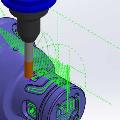
|
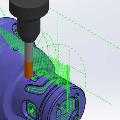
|
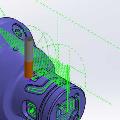
|
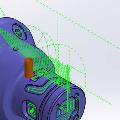
|
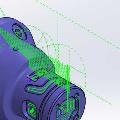
|
Information of Current Toolpath
- Current Tool
Location - lists the X,Y,Z coordinates of the tool tip,
based on the machine setup.
- Current Tool
Orientation - lists the direction vector of the tool.
- More Detailed
Information - lists the following:
- Move Type
- describes the toolpath segment.
- Feedrate
- describes the current move as either, Rapid, Plunge,
or Regular Feed.
- Start Point
- describes the start point of the current move.
- Start Direction
- describes the tool vector.
- End
Point - describes the end point of the current move.
- Arc Center - describes the center point of the current arc movement.
- Move Type
- describes the toolpath segment.






